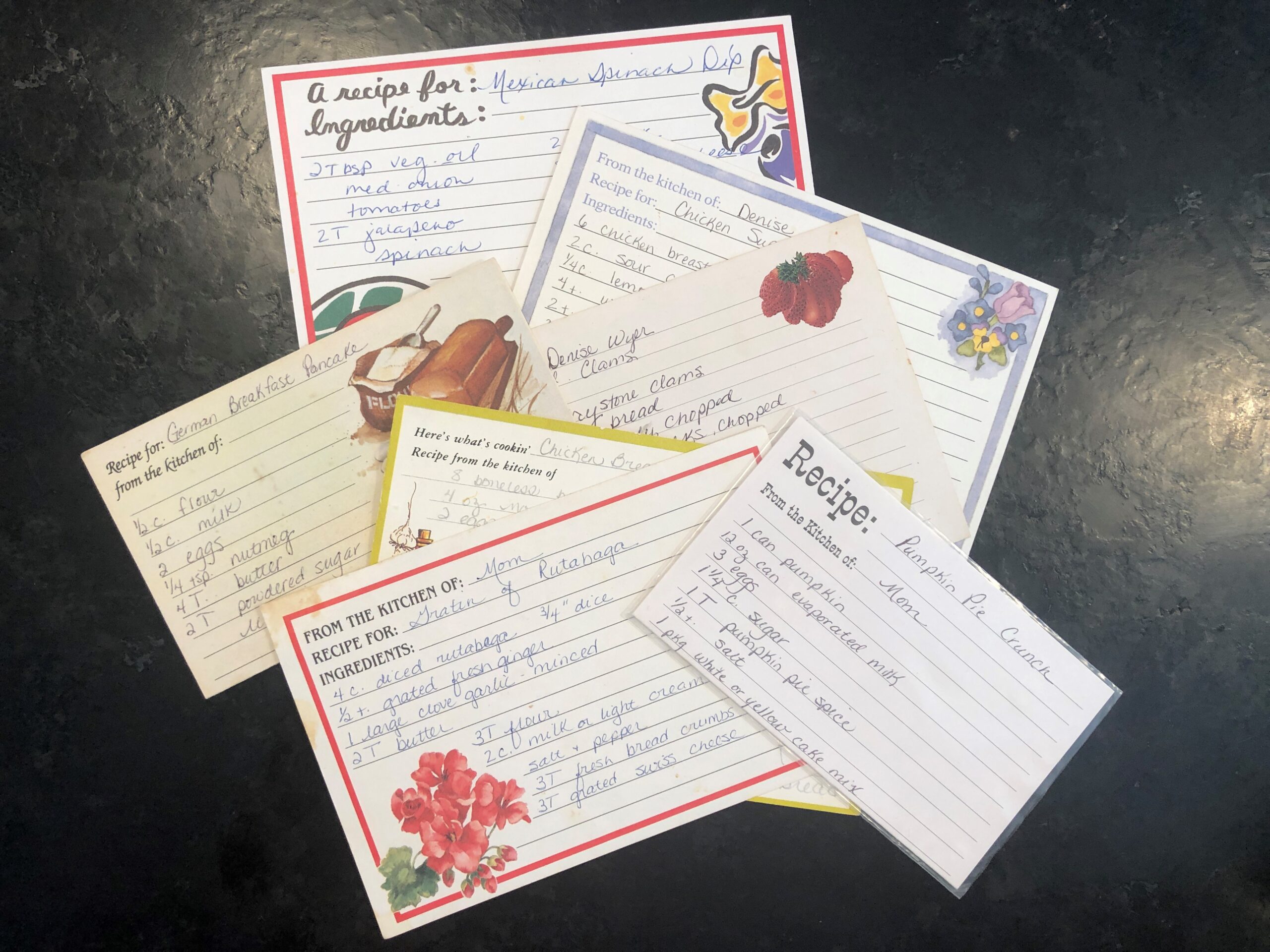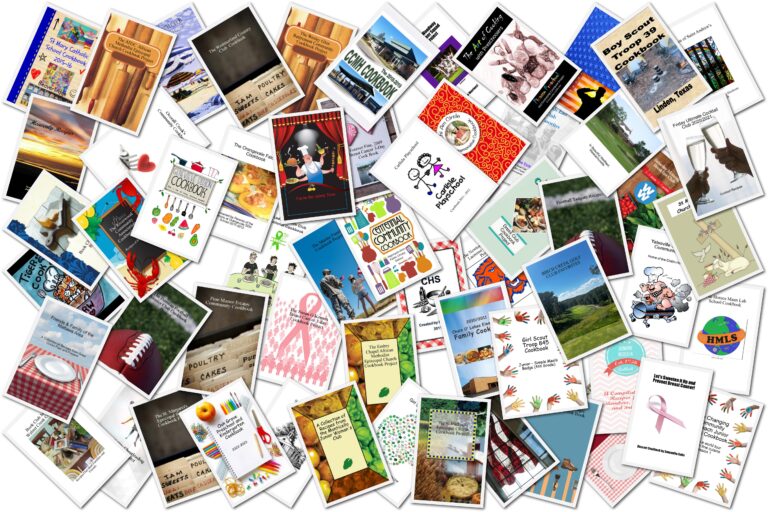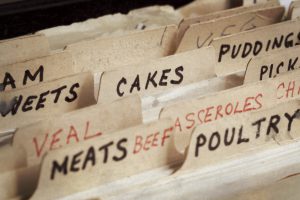How To Write A Great Recipe
Whether you are writing down a family favorite, starting a food blog, or entering a recipe contest, learning how to properly write a recipe is a valuable skill any food lover can use.
Here are a few standards and general rules of thumb we at CookbookFundraiser.com suggests when it comes to writing a recipe. It is important to accurately communicate the ingredients and process, so your recipe can be recreated by others.
Before the ingredients, comes the title, number of servings and serving size if appropriate. Then the ingredient list and the preparation directions. The final area allows you to provide helpful comments on your recipe.
Recipe Title:
- This is the name of your recipe using words that accurately describe the dish. Feel free to have a little fun and make it catchy! You want people to keep reading and be inspired to make the recipe themselves. See our post How to Write A Great Recipe Title to learn more about recipe titles.
The Ingredient List:
- List all ingredients in order of use, as described in step-by-step instructions.
List the most important ingredients first, if it can be consistent with order of use. - Spell out everything: tablespoons, ounces, etc. or use commonly accepted abbreviations which can be inserted from the drop down menu on the “Add a recipe” page.
- If the recipe has different parts (for example, a pie has a crust and a filling), break up the ingredient list with headings such as “Crust” and “Filling” using the multi-part recipe option on your “Add a recipe” page.
- When several ingredients are used at the same time (in the case of baking, often all the dry ingredients are sifted or mixed together at once), list them in descending order according to volume. If there is an issue over preparation, list in order, so for example if you need the zest and juice of a lemon, list the zest first and then the juice since that is the order you will do the preparation.
- Do not use two numbers together. You need to set off the second number in parenthesis. This comes up with sizes of packages. For example, “1 (8-ounce) package cream cheese.”
- If an ingredient begins with a letter instead of a number, freshly ground black pepper, for example, capitalize the first letter, as in “Freshly ground black pepper.”
- If the preparation of an ingredient is simple, place that technique in the ingredient list, as in “2 eggs, beaten” or “1 stick butter, softened.”
- If an ingredient is used more than once in a recipe, list the total amount at the place in the ingredient list where it is first used, then add “divided.” In the method part of the recipe, indicated the amount used at each step. For example “1 cup all-purpose flour, divided” then in the method “Sift 3/4 cup of the flour with the…” and later “Sprinkle the remaining 1/4 cup of flour on top of…”
- Use generic names of ingredients (semi-sweet chocolate chips, not “Tollhouse chips”.
Directions
- Where helpful, indicate the size of bowls and cookware. For example, “In a large mixing bowl….”
- You do not have to write complete sentences. Be as short and concise as possible.
- With instructions for the stove-top, indicate level of heat. For example, “Simmer over low heat.”
- State exact or approximate cooking times, with descriptive hints for doneness, if appropriate. For example, “Sear 1 minute on each side,” and “Bake 18-22 minutes, or until crust is light golden brown.”
- As in the ingredient list, if there are different elements to the recipe, as with the crust and filling of a pie, separate out each element in the method. Begin with the crust and write a header “For the Crust” and give the method. Then do “For the Filling” and give filling instructions. This is done automatically using the multi-part recipe option at CookbookFundraiser.com.
- Separate each step into a different paragraph. If you are mixing dry ingredients in a bowl, for example, use one paragraph for all the instructions for that step.
- Finish with serving instructions including how to plate, what temperature to serve, how to garnish.
- The last instruction can be regarding storage, if applicable. For a cookie recipe, for example, “Cookies will keep at room temperature in an airtight container for 3-4 days.”
Comments
- Use this area to communicate anything additional information someone would need to know to recreate your recipe at home.
- You can also offer ideas for alternate ingredients, tips, or serving suggestions.
- You also can use this area to tell a story about this recipe and the meal that is was introduced to the family.
- Source your recipes in the comments field. If you got your inspiration from a magazine or cookbook, or lift a recipe from a blog or website, you should give them credit. This goes for recipe photos as well. Never use images without the owners consent.
- Especially if you are posting your recipe online, it is important to include the name, source and webpage of the original recipe. State if the recipe is “Adapted from”: Which means you made minor changes to ingredients and/or preparation technique. or “Inspired from”: Which means you used the stated recipe as a guide or inspiration for your own recipe which may include some of the same ingredients and techniques.
- Food bloggers: If you are sharing a recipe from your own blog, this field is a great place to put in a link back to your site!
Time and Servings:
- Preparation time includes all the measuring, chopping and other preparation of ingredients.
- Cooking time refers to the total time the food takes to cook, including any preliminary cooking needed.
- Remember, these times are just a guide for the reader. Try to be generous with the timing, someone making the recipe for the first time will take longer that you who has experience making it.
- Also, include the number of servings based on reasonable portions.
Pictures/Videos:
- Try to include a photo of the finished product. There is nothing better for people to see the food they are about to prepare that what it will look like when complete.
- A popular trend today is to create videos of yourself making the recipe. Remember to pause the camera or to cut extra footage so the final video is not too long to watch.
Bill Rice is the Co-Publisher of Family Cookbook Project and CookbookFundraiser.com which helps individuals, churches, schools, teams and other fundraising groups create cherished personalized cookbooks using peer-to-peer tools and the power of the Internet to meet group funding needs. Follow us on Facebook, Twitter, Instagram and Pinterest!





